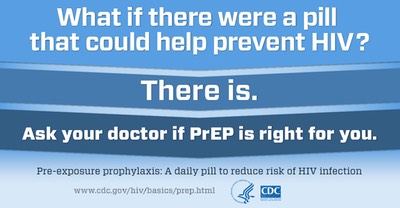PEP (Post-Exposure Prophylaxis) is an emergency medical intervention that administers a combination of antiretroviral (ARV) medications after an uninfected/HIV-negative person has been exposed to bodily fluids from another person that pose a risk for HIV infection. (Blood, sexual fluids.) PEP reduces the risk of contracing HIV after exposure.
PEP can used for those who have been exposed through an event at work (oPEP) or through unprotected sex (nPEP), within 36-72 hours of contact. (In the case of potential exposure, the earlier treatment begins, the better.)
A PEP regimen must be adhered to daily for 28 days.
Visit your physician, health-care provider, or emergency room for more complete information, medical assistance, and options.
Contact your physician or emergency room to get an emergency prescription for PEP. It is the same protocol followed by medical staff when they have a needle stick.
• oPEP - Occupational Post-Exposure Prophylaxis.
This is defined as when one has been injured with a needle, blade, or manner of wound that involves exposure to another’s blood, sexual fluids, or other infectious fluids.
• nPEP - Non-Occupational Post-Exposure Prophylaxis.
This refers to an unprotected sexual event in which the other person's HIV status is unknown, and the patient is willing to take 28 days of medication in order to reduce the risk of HIV infection.
PEP is recommended (in addition to other risk reduction/safe sex strategies) by the CDC and WHO for those at risk for HIV infection.
• Prophylaxis: To prevent or control the the spread of an infection or disease.
For more information, please visit: https://aidsinfo.nih.gov/understanding-hiv-aids/fact-sheets/20/87/post-exposure-prophylaxis--pep-
PrEP (Pre-Exposure Prophylaxis)
Case Management • HIV Testing • Housing • LaHAP • Bingo • News • Media • Contact

